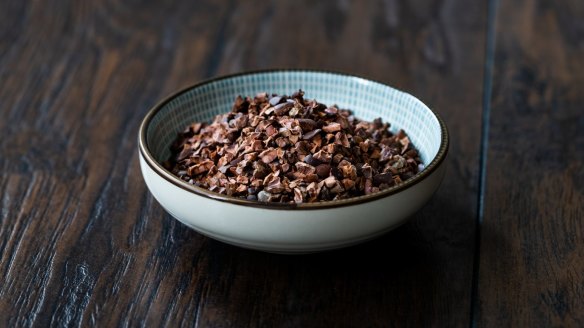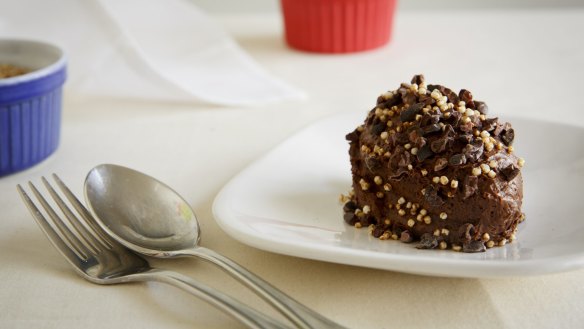Cacao nibs: Everything you need to know

Updated , first published

What are they?
No bigger than your little fingernail, cacao nibs are the innards of cacao beans, from which chocolate and cocoa are derived. Bitter but packed with flavour, aroma, essential minerals and 50 per cent "good fat", nibs have been embraced by the health movement for their nutritional value. They all start with Theobroma cacao, a tropical bush originally from Central America. It produces large pods that open when ripe, allowing the beans inside to ferment. This is a natural process that dramatically changes and develops the flavours. The cacao beans are then dried for shipment to chocolate makers. Cacao beans are roasted, then winnowed to remove the husk. What is left are cacao nibs.

Why do we love them?
Good cacao nibs present the myriad aromas that cacao develops through fermentation, from tropical fruit flavours to deep, dark muscat wine, earthy forest to spices like nutmeg and cinnamon. They have a crisp crunch in the mouth, and a cooling sensation as the fat absorbs heat from your tongue as it changes from solid to a liquid state. Cacao nibs are packed with manganese and magnesium, elements essential for the healthy functioning of our bodies. They have a slightly bitter taste, which points to the phytochemicals, especially flavanols, that act as antioxidants and anti-inflammatories. With a little kick of stimulants caffeine and theobromine, cacao nibs contain all the aroma and benefits of chocolate without the sugar, emulsifiers and added dairy fat.
Who uses them?
Juan Carlos Negrete from Newtown's Maiz Mexican Street Food grew up in Mexico. There, villages still have a molinero, the miller who grinds cacao beans with cinnamon and other ingredients to make the base for hot chocolate drinks. At his Sydney restaurant, he uses nibs in mole con hongos, or mushroom mole, a spicy sauce originally from Puebla where cacao nibs are ground with macadamia for a velvety texture. Australia's microbrewing industry has embraced cacao in making chocolate-flavoured stouts and porters. Jacqueline Brodie Hanns from Shedshaker Brewery in Castlemaine, Central Victoria, says: "I love the fragrance of cacao. It is the purest form of chocolate you are ever going to experience ... We use freshly roasted cacao nibs from our French chocolatier neighbour Cabosse & Feve Chocolates. We steep the nibs in the fermented beer for four days before bottling to produce our Robust Chocolate Porter." This is a dark, rich beer with aromas of roasted malt, notes of worn leather, and heady chocolate. Perfect with roast duck.
How do you use them?
Add a little pick-me-up to your trail mix with a small handful of cacao nibs alongside your dried fruit and nuts. Drop a tablespoon into your smoothie before blending. Add some cacao nibs to your muesli or sprinkle crushed cacao nibs over porridge. If you're making home-made nut butter, add a small handful of cacao nibs for extra colour, flavour and nutrition. Use cacao nibs as a healthy replacement to chocolate chips in biscuits and muffins. You could make a decadent dark chocolate and almond praline truffle, chocolate and cacao nib mousse or try a savoury dish such as twice-roasted duck with salted orange, cacao nibs and coffee. Health experts recommend that pregnant women should consult their healthcare provider before eating cacao nibs. Store nibs in an airtight container in a cool, dark place.
Where do you get them?
Woolworths carry Macro brand cacao nibs, as do bulk grocers such as The Source Bulk Foods, while Naked Foods stocks organic cacao nibs. Harris Farms stocks Chef's Choice cacao nibs while the Essential Ingredient stocks single origin cacao nibs from The Solomon Islands, as does South Pacific Cacao.
Suggest an ingredient via email to brainfood@richardcornish.com.au or tweet to @foodcornish
Appears in these collections
More:
From our partners
Original URL: https://www.watoday.com.au/goodfood/cacao-nibs-everything-you-need-to-know-20211019-h1z9g0.html